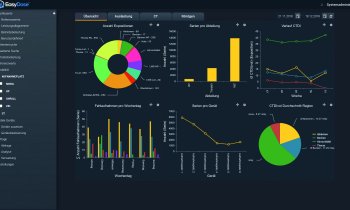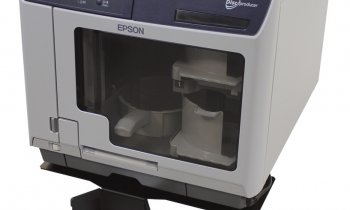Most DICOM-CDs do not meet standards
Germany - 74% of DICOM-CDs from 87 different manufacturers do not comply with current standards, according to a joint study by OFFIS (Oldenburger Forschungs- und Entwicklungsinstitut für Informatik-Werkzeuge und -Systeme) and the Deutsche Röntgengesellschaft (DRG), presented at the recent 9th HIS-RIS-PACS and DICOM Meeting*.

Five percent of the CDs were also found to be defective and, of the remaining 21%, less than half met the requirements for DICOM-CDs. ‘Most problems are caused by non-compliance with file or path naming conventions and by missing attributes,’ Michael Onken of OFFIS explained.
At the event experts familiar with hospital and general practitioner (GP) working needs looked at software systems from various perspectives – in particular the challenge of data exchange. This not only means online, but also via CD exchange, all of which present enormous obstacles.
Physicist and radiologist Dr Reinhard Loose, of the Institute for Diagnostic and Interventional Radiology in the 1,100-bed North Nuremburg Hospital, surprised the audience - and particularly manufacturers’ representatives - when he said that PACS is not an enterprise-critical application there. ‘A discussion with 40 clinical department heads of our hospital indicated that a PACS failure in no way impedes clinical workflows,’ he said, and explained that all imaging specialists there use local buffer stores, where all data can be stored for several days. Distribution of images to individual departments and wards is ensured by a dedicated web server. Rather than investing in expensive SAN (Storage Area Network), NAS (Network Attached Storage) or CAS (Content Addressed Storage) solutions, the physicist and radiologist recommends purchasing two inexpensive RAID systems, each of which proves uptime of 97%. Mathematically this solution offers a total system stability of 99.91%, he added, making the popular and expensive 24/7 full-service contracts entirely obsolete.
A further issue are the unclear legal implications of compressing and storing angiography data from multi-slice CT. In addition, they discussed the transmission of slices of sub-millimetre thickness that requires immense bandwidth and unnecessarily prolongs workflow.
The integration of non-DICOM images in to PACS made another focal point. Internists, dermatologists, ophthalmologists can now see the value of digital archives so would like to store their images in PACS, for assignation to an electronic patient record (EPR). Whilst in Germany this is still being discussed, other European users have progressed – e.g. the Son Llatzer Hospital in Palma de Mallorca, Balearics, has found an impressive solution for multi-media patient files based on a PACS.
* The meeting was organised by the working group @GIT of the Deutsche Röntgengesellschaft (DRG) with the co-operation of the Akademie für Fort- und Weiterbildung in der Radiologie (a further education school for radiology), and supported by IHE Deutschland, OFFIS and the Johannes-Gutenberg University in Mainz.
31.08.2007











